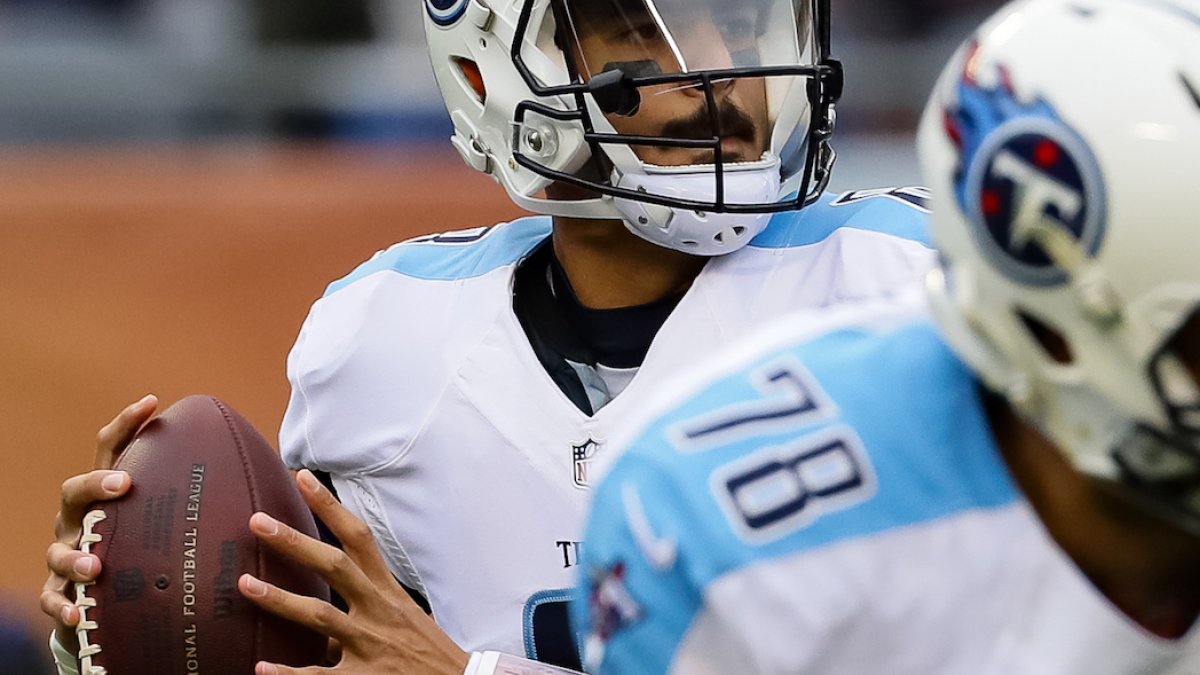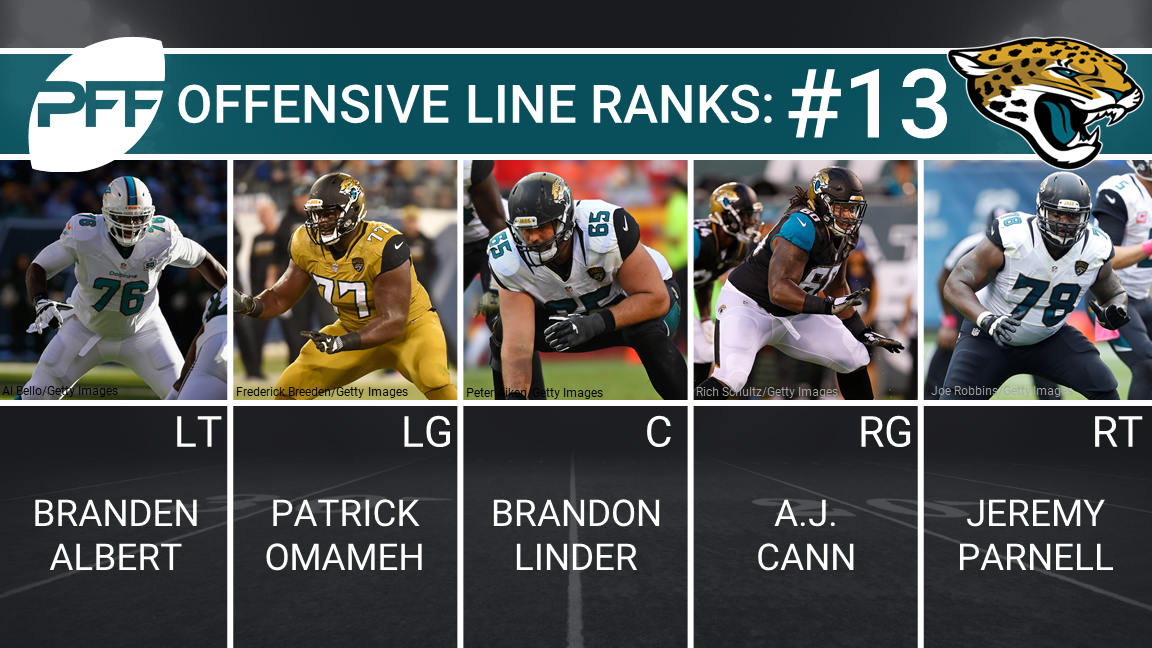Have you ever gone back and forth with someone online, only to meet face to face and wonder why you thought this person had a soul? Or maybe you had friends over for a holiday, decided to try out a cool fusion recipe and the result looked like a bowl of mush? If you have kids, then you cringe when someone suggests a “craft” wherein your child is supposed to turn a Q-tip and a leaf into the Leaning Tower of Pisa.
Fantasy is often better than reality.
Here at PFF, we take real football data and apply those observations to fantasy analysis. That is the sane way to do things, because great football players offer great results on the field. Often that translates to fantasy points.
Sometimes, however, there are some discrepancies when you look at the PFF player grades and the fantasy production. And this time of year, the discrepancies between last year’s PFF player grades and current ADPs can seem puzzling. Here are some of the biggest head-scratchers and why things look different heading into the 2017 season.
Marcus Mariota, QB, Tennessee Titans
2016 PFF grade: 72.4, 24th among quarterbacks.
Current ADP: QB12
Mariota’s season ended with a broken fibula, but he’s back in full action and there’s reason for optimism. First, despite his subpar PFF grade, Mariota took a giant leap from his rookie season to his sophomore outing in 2016 and finished as the 10th-highest-scoring fantasy quarterback on the season in standard scoring. In 2015, he completed only 20.4 percent of his passing attempts targeted at 20 yards or more downfield, but last year he jumped up to a 41.9 completion percentage at the same distance. More notably, the Tennessee Titans gave Mariota myriad targets and the team’s offensive line recently came in as the No. 4 offensive line going into the 2017 season.
Rishard Matthews emerged as the teams’ No. 1 wideout last season, but the Titans decided to add dynamic playmakers and stack the position with depth. They drafted Western Michigan wide receiver Corey Davis as the fifth overall pick. Davis was the NCAA’s all-time leader in receiving yards (5,278). More recently, the Titans landed Eric Decker and signed him to a one-year deal. It’s unclear as to who will be the No. 1 option, but one thing that is crystal clear, Mariota has options. Great options.
Todd Gurley, RB, Los Angeles Rams
2016 PFF grade: 68.6, 33rd among halfbacks
Current ADP: RB11
Gurley’s sophomore slump looked like the perfect storm of fantasy football disappointment. Jeff Fisher and the Rams’ anemic passing game made it easy for defenses to key in on Gurley. The Rams’ offensive line ranked 27th according to PFF at the end of the season, with Rodger Saffold standing out as a bright light. A move to Andrew Whitworth at left tackle is a nice upgrade.
However, Gurley was part of the issue. He only forced 28 missed tackles on 278 carries. Only seven of his carries went over 15 yards. His 3.2 yards per carry tied for 67th among running backs who played in at least 25 percent of their teams’ snaps. It also was a large drop from his 4.8 YPC in 20165. His 2.2 yards after contact tied for 54th, and was down from 2.9 the year before. And even though those raw numbers are less than desirable, Gurley still finished the season as a top-20 running back in both standard and PPR formats. Sean McVay is the new head coach, and his offensive scheme should help the passing game, which will ease up the defensive pressure for Gurley, hopefully leading him back toward his rookie numbers.
Lamar Miller, RB, Houston Texans
2016 PFF grade: 67.5, 41st among halfbacks
Current ADP: RB13
Volume. Normally the fantasy industry (justifiably) stresses the importance of volume and the direct link to fantasy production. And like Gurley, Miller finished the season as a top-20 back in both standard and PPR formats despite missing two games due to an ankle injury. When Miller made the move to the Texans from the Dolphins, everyone knew there would be an uptick in volume and that did happen. Miller averaged 19.1 carries and 2.2 catches per game in 2016. Over the course of his three prior seasons, Miller averaged just 12.2 carries and 2.3 catches per game. Seven more carries per game is a substantial increase, but he could only muster up six total touchdowns in the Texans’ weak offense.
Also, it was too much. Head coach Bill O’Brien admitted they overused Miller early in the season, and they won’t make that mistake again. Look for solid volume, but not crazy volume, and hopefully that will lead to a more fruitful season as the second-year started running back in Houston.
Allen Robinson, WR, Jacksonville Jaguars
2016 PFF grade: 73.9, 55th among wide receivers
Current ADP: WR16
Bortles was a major liability for all the fantasy options on the Jacksonville Jaguars. Bortles’ PFF grade was 52.9, 28th among quarterbacks. The only reason I didn’t feature Bortles earlier in this article is because his ADP is outside of the top-20 quarterbacks, so he’s not as relevant to this conversation on his own. However, to talk about Robinson we need to talk about Bortles. Bortles’ 69.7 percent adjusted completion rate was 24th in the league among quarterbacks who played in at least 50 percent of their teams’ dropbacks. On passes of 20 yards or more, that completion rate dropped to 23.5, the worst among signal-callers with at least 15 attempts at that distance.
But Robinson contributed to the Jaguars’ offensive strife. His nine drops tied for fourth-most in the league. His 1.33 yards per pass route run tied for 96th in the league. He was the only wideout with 140-plus targets to finish outside of the top-25 fantasy wide receivers in both standard and PPR settings. This all sounds bad, but there is room for optimism. First, the Jaguars offensive line ranks 13th going into the season. The team drafted former LSU running back Leonard Fournette. The hope is for Fournette to control the clock and create some balance in this lopsided offense. A run game and protection could also help Bortles improve, along with the work he put into his form during the offseason. If Robinson focuses on his role and the rest of the team rises to the challenge, look for Robinson to move toward the numbers he put up in 2015, when he went for 1,400 yards and 14 touchdowns.
Brandon Marshall, WR, New York Giants
2016 PFF grade: 71.7, 67th among wide receivers
Current ADP: WR25
ADP numbers are in the early stages of settling into the full swing of fantasy football season, and there is no bigger red flag than Marshall as the 25th wide receiver off the board. Unlike his time as a Jet, a Bear, a Dolphin, or a Bronco, Marshall will not be the No. 1 wideout for the New York Giants. Odell Beckham Jr. has 91-plus receptions, 1,300-plus yards and 10-plus touchdowns in each of his three seasons in the NFL. That will continue into 2017. Marshall had a down year on the struggling Jets in 2016. But know that since 2007, Marshall averaged an 82.28 PFF grade. He’s gone over 1,000 yards in eight of his 11 seasons. If he was the No. 1 option on the Giants, you could have more confidences in a breakout, but in this case, you should probably exercise caution and not count on him as an every-week starter in the early rounds of your fantasy draft.
Eric Ebron, TE, Detroit Lions
2016 PFF grade: 50.6, 49th among tight ends
Current ADP: TE16
The tight end position is perhaps the most perplexing of all the fantasy roster spots. And perhaps, the tight end PFF grades are the least reflective of fantasy performance at this position as well. Ebron is a prime example of why, and it is all about blocking. Ebron scored an abysmal 29.6 grade on run-blocking in 2016. That was the lowest run-blocking score among all tight ends that received a score at all. However, when was the last time you scored a fantasy point for run-blocking? Ebron is a fantastic sleeper candidate for the upcoming season because his volume indicates that his total fantasy output should increase.
Despite only playing in 13 games, Ebron had tied for the ninth-most targets (85), the 10th-most catches (61), and the eighth-most yards (711). The biggest knock against his production was that he only scored one receiving touchdown all season. Ebron was the only player at any position with 60 or more catches and only one receiving touchdown in 2016 or 2015 (he did have one rushing touchdown as well in 2016). Instead of calling it “bad luck,” we should simply recognize it as the bizarre outlier that it is and project him for more trips into the end zone in 2017.




 © 2025 PFF - all rights reserved.
© 2025 PFF - all rights reserved.